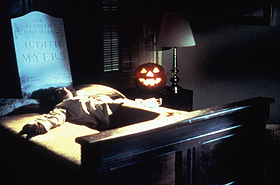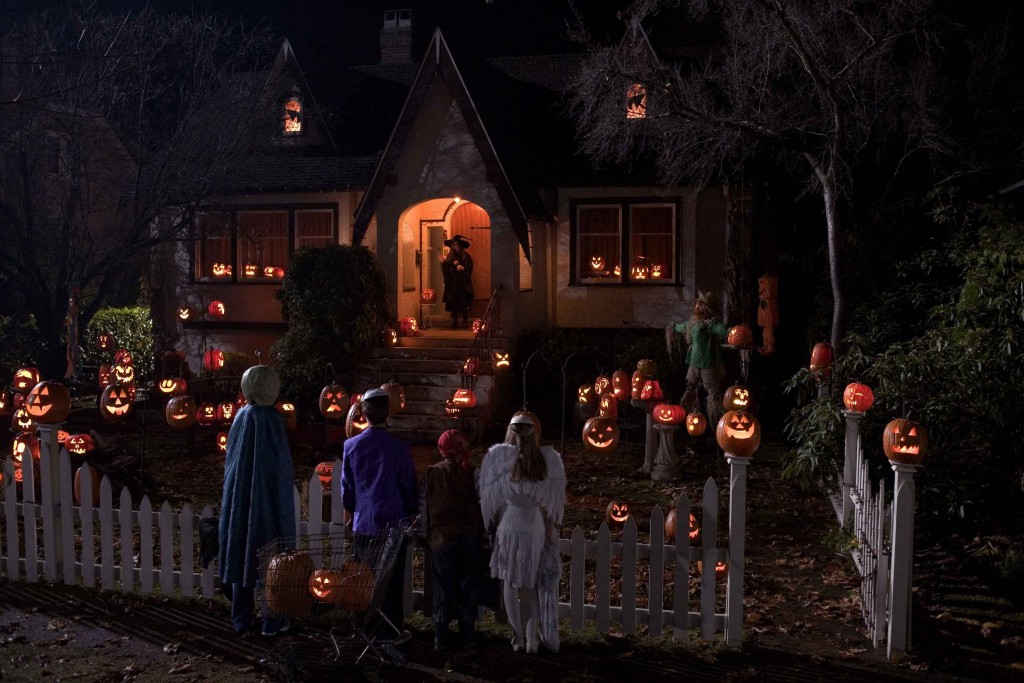Like many of our holidays, Halloween grew from odd mix of religious and cultural roots.
Our current American incarnation of Halloween would seem to have ties to four distinct and quite far-flung celebrations. (I am not going to blend in anything about Day of the Dead, which has its own cultural foundations.)
1. The Roman Feralia festival, commemorating the dead
2. The Roman Pomona festival, honoring the goddess of fruit and trees
3. The Celtic festival Samuin, meaning “summer’s end”, (also called “Samhain”) which the bulk of Halloween traditions ultimately stem from
4. The Catholic “All Soul’s Day” and “All Saints’ Day,” which began around 800 by the Church in order to to replace Samuin
When the Catholics spread Christianity to the Pagan world, they just “adjusted” the day to be “All Hallows Evening” and the next day “All Souls Day” and encouraged people to dress up as saints and angels rather than demons.
 Trick or Treating first appeared in the Middle Ages, when children and the poor would go from door to door and beg for alms, promising to say a prayer or sing a song for your loved one in exchange for a “soul cake.” A soul cake is very much like the hot cross buns of Easter (yet another corrupted holiday) Soul cakes represent a soul who is in Purgatory and can be released by a living person eating the cake in their memory.
Trick or Treating first appeared in the Middle Ages, when children and the poor would go from door to door and beg for alms, promising to say a prayer or sing a song for your loved one in exchange for a “soul cake.” A soul cake is very much like the hot cross buns of Easter (yet another corrupted holiday) Soul cakes represent a soul who is in Purgatory and can be released by a living person eating the cake in their memory.
Fast forward to the 19th century in the United Kingdom when children just started begging for fruit or money instead: However, they would sing a song, tell a joke, or recite a poem to earn their reward. When you consider that “live” entertainment was the only entertainment, it was quite popular for both the children who earned the rewards and those for whom they provided amusement.
The Scots and the Irish are principally responsible for bringing this tradition over to the US in the late 19th and early 20th century. It gained in popularity shortly before WWII, during which time the performances had descended into petty acts of extortion by kids who threatened vandalism if they did not receive treats. Hey, it was the Great Depression, and times were hard. Halloween took a brief hiatus due to sugar rationing during the Second World war. About five years after VJ Day, trick or treating came back in the form that is most similar to what we see today.
Finally, what E-Verse post would be complete without a literary reference? Shakespeare mentions Halloween, or at least the practice of begging from door to door at Hallowmas, in his play Two Gentlemen of Verona
VALENTINE: Why, how know you that I am in love?
SPEED: Marry, by these special marks: first, you have learned, like Sir Proteus, to wreathe your arms, like a malecontent; to relish a love-song, like a robin-redbreast; to walk alone, like one that had the pestilence; to sigh, like a school-boy that had lost his A B C; to weep, like a young wench that had buried her grandam; to fast, like one that takes diet; to watch like one that fears robbing; to speak puling, like a beggar at Hallowmas . . .



No Comments